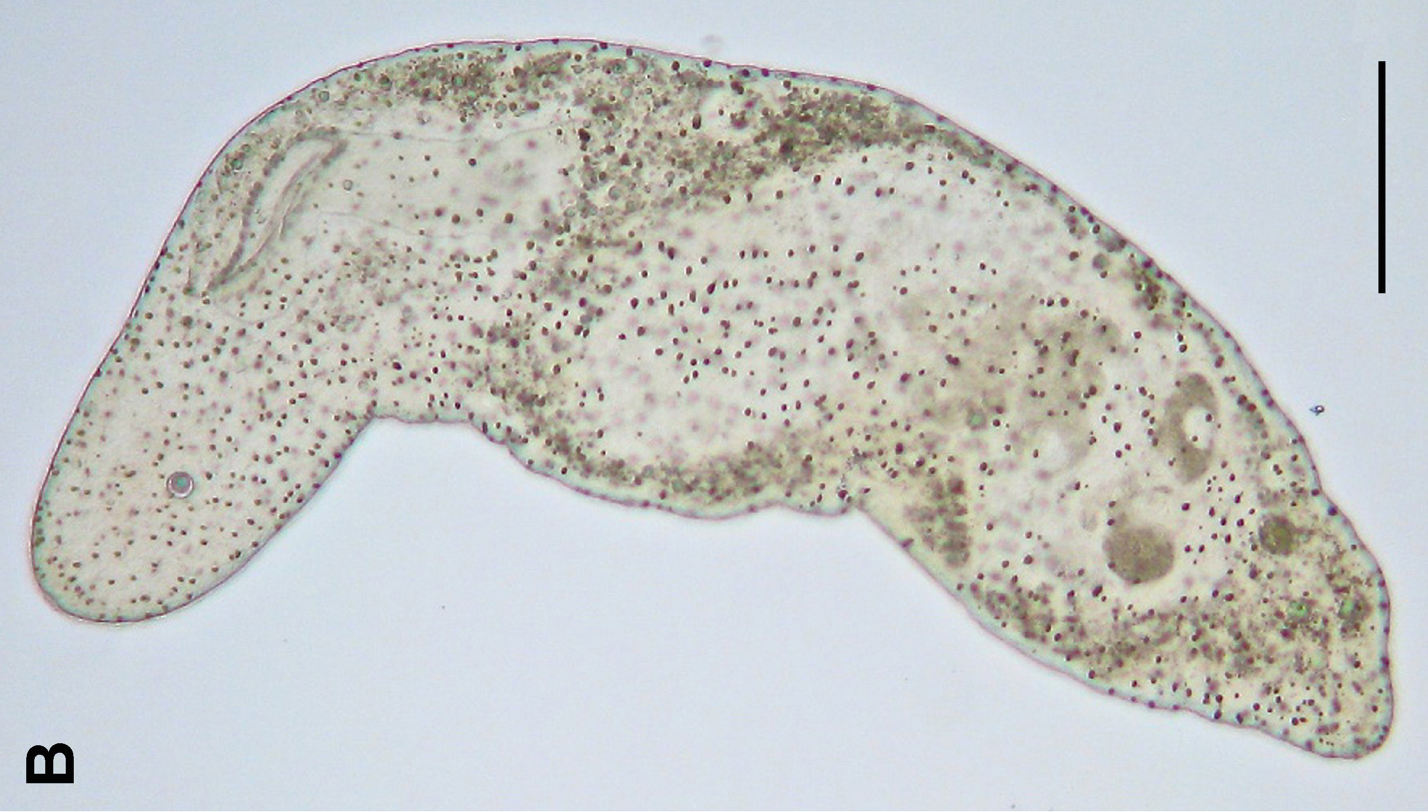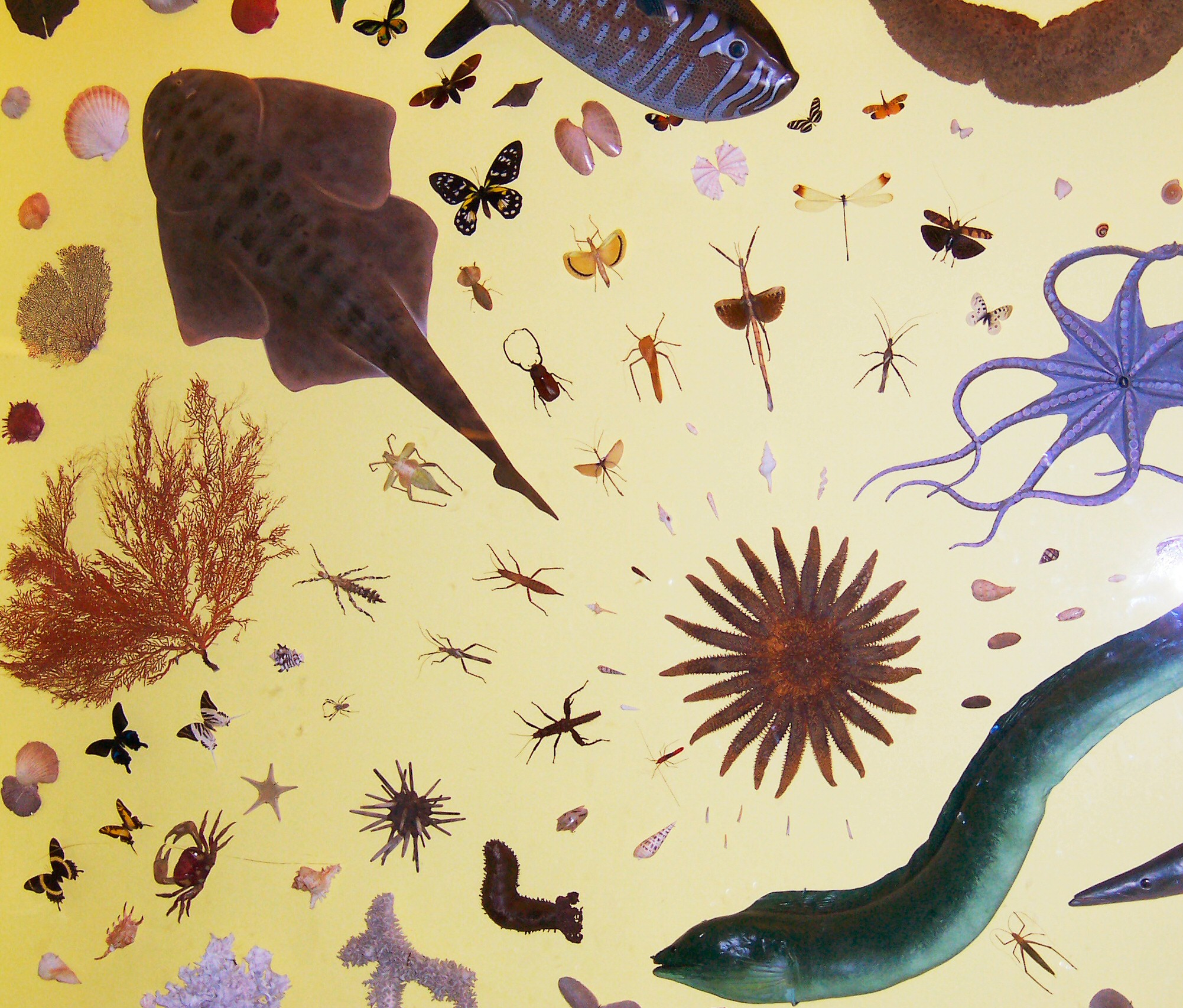|
Xenambulacraria
Xenambulacraria is a proposed clade of animals with bilateral symmetry as an embryo, consisting of the Xenacoelomorpha (i.e., ''Xenoturbella'' and acoelomorphs) and the Ambulacraria (i.e., echinoderms and hemichordates). If confirmed, the clade would either be the sister group to the chordates (deuterostome Deuterostomia (; in Greek) are animals typically characterized by their anus forming before their mouth during embryonic development. The group's sister clade is Protostomia, animals whose digestive tract development is more varied. Some exa ...s monophyletic) or the sister group to all the other bilaterians (deuteristomes paraphyletic). File:Nemertodermatida species.png, Various Acoelomorpha (nemertodermatids). File:Enteropneusta.png, Various Hemichordata (enteropneusts). References {{Animalia Controversial taxa Bilaterian taxa ... [...More Info...] [...Related Items...] OR: [Wikipedia] [Google] [Baidu] |
Deuterostome
Deuterostomia (; in Greek) are animals typically characterized by their anus forming before their mouth during embryonic development. The group's sister clade is Protostomia, animals whose digestive tract development is more varied. Some examples of deuterostomes include vertebrates (and thus humans), sea stars, and crinoids. In deuterostomy, the developing embryo's first opening (the blastopore) becomes the anus, while the mouth is formed at a different site later on. This was initially the group's distinguishing characteristic, but deuterostomy has since been discovered among protostomes as well. This group is also known as enterocoelomates, because their coelom develops through enterocoely. The three major clades of deuterostomes are Chordata (e.g. vertebrates), Echinodermata (e.g. starfish), and Hemichordata (e.g. acorn worms). Together with Protostomia and their out-group Xenacoelomorpha, these compose the Bilateria, animals with bilateral symmetry and three ... [...More Info...] [...Related Items...] OR: [Wikipedia] [Google] [Baidu] |
Xenacoelomorpha
Xenacoelomorpha is a small phylum of bilaterian invertebrate animals, consisting of two sister groups: xenoturbellids and acoelomorphs. This new phylum was named in February 2011 and suggested based on morphological synapomorphies (physical appearances shared by the animals in the clade), which was then confirmed by phylogenomic analyses of molecular data (similarities in the DNA of the animals within the clade). Phylogenetics The clade (groupings of organisms based on their most recent shared/common ancestors) Xenacoelomorpha groups the Acoelomorpha and the genus ''Xenoturbella'', due to molecular studies. Initially this phylum was considered to be a member of the deuterostomes, (meaning during development, as an embryo, the anus develops first and then the mouth), but because of recent transcriptome analysis, it was concluded that phylum Xenacoelomorpha is the sister group (two closest relatives in a phylogenetic tree) to the Nephrozoa, which includes both the protost ... [...More Info...] [...Related Items...] OR: [Wikipedia] [Google] [Baidu] |
Acoelomorpha
Acoelomorpha is a subphylum of very simple and small soft-bodied animals with planula-like features which live in marine or brackish waters. They usually live between grains of sediment, swimming as plankton, or crawling on other organisms, such as algae and corals.Cannon, L. R. G. (1986) ''Turbellaria of the World. A guide to families and genera''. Brisbane, Queensland Museum, 136 p. With the exception of two acoel freshwater species, all known Acoelomorphs are marine. Systematics Etymology The term "acoelomorph" derives from the Ancient Greek words (), the ''alpha privative'', expressing negation or absence, (), meaning "cavity", and (), meaning "form". This refers to the fact that acoelomorphs have a structure lacking a fluid-filled body cavity. Classification The subphylum Acoelomorpha is divided into two classes. There are at least 408 described species, with a majority of these falling within the Crucimusculata infraorder in Acoela. * Acoela comprise small ... [...More Info...] [...Related Items...] OR: [Wikipedia] [Google] [Baidu] |
Acoelomorph
Acoelomorpha is a subphylum of very simple and small soft-bodied animals with planula-like features which live in marine or brackish waters. They usually live between grains of sediment, swimming as plankton, or crawling on other organisms, such as algae and corals.Cannon, L. R. G. (1986) ''Turbellaria of the World. A guide to families and genera''. Brisbane, Queensland Museum, 136 p. With the exception of two acoel freshwater species, all known Acoelomorphs are marine. Systematics Etymology The term "acoelomorph" derives from the Ancient Greek words (), the ''alpha privative'', expressing negation or absence, (), meaning "cavity", and (), meaning "form". This refers to the fact that acoelomorphs have a structure lacking a fluid-filled body cavity. Classification The subphylum Acoelomorpha is divided into two classes. There are at least 408 described species, with a majority of these falling within the Crucimusculata infraorder in Acoela. * Acoela comprise small flat ... [...More Info...] [...Related Items...] OR: [Wikipedia] [Google] [Baidu] |
Xenoturbella Japonica
''Xenoturbella japonica'' is a marine benthic worm-like species that belongs to the genus ''Xenoturbella''. It has been discovered in western Pacific Ocean by a group of Japanese scientists from the University of Tsukuba. The species was described in 2017 in a study published in the journal BMC Evolutionary Biology, and amended in 2018. ''Xenotrubella japonica'' is known for lacking respiratory, circulatory and an excretory system. Description The etymology of the species name corresponds to the locality where the specimens were sampled. ''Xenoturbella japonica'' is in length, with a pale orange colouration. The body wall displays ring and side furrows. The mouth is orientated ventrally, just anterior to the ring furrow. The live specimen exhibits a conspicuous ventral epidermal glandular network. Tissues contain exogenous DNA corresponding to bivalve mollusks, the vesicomyid ''Acila castrensis'' and ''Nucula nucleus ''Nucula'' is a genus of very small saltwater clams ... [...More Info...] [...Related Items...] OR: [Wikipedia] [Google] [Baidu] |
Xenoturbella
''Xenoturbella'' is a genus of very simple bilaterians up to a few centimeters long. It contains a small number of marine benthic worm-like species. The first known species ('' Xenoturbella bocki'') was discovered in 1915 by Sixten Bock, but it was only properly described in 1949 by Einar Westblad. Description ''Xenoturbella'' has a very simple body plan. It consists of dorsoventrally flattened acoelomate animals, with an anterior circumferential furrow. It shows two ciliated epithelial layers: an external epidermis and an internal gastrodermis lining the simple sac-like gut. The multiciliated epiderm displays unique interconnected ciliary rootlets and mode of withdrawal and resorption of worn epidermal cells. The mouth is a mid-ventral pore leading to a gastral cavity, and there is no anus: waste is dispelled through the same opening as food is taken in. The nervous system is composed by a net of interconnected neurons beneath the epidermis, without any concentration of neur ... [...More Info...] [...Related Items...] OR: [Wikipedia] [Google] [Baidu] |
Chordate
A chordate () is an animal of the phylum Chordata (). All chordates possess, at some point during their larval or adult stages, five synapomorphies, or primary physical characteristics, that distinguish them from all the other taxa. These five synapomorphies include a notochord, dorsal hollow nerve cord, endostyle or thyroid, pharyngeal slits, and a post-anal tail. The name “chordate” comes from the first of these synapomorphies, the notochord, which plays a significant role in chordate structure and movement. Chordates are also bilaterally symmetric, have a coelom, possess a circulatory system, and exhibit metameric segmentation. In addition to the morphological characteristics used to define chordates, analysis of genome sequences has identified two conserved signature indels (CSIs) in their proteins: cyclophilin-like protein and mitochondrial inner membrane protease ATP23, which are exclusively shared by all vertebrates, tunicates and cephalochordates. These CSI ... [...More Info...] [...Related Items...] OR: [Wikipedia] [Google] [Baidu] |
Hemichordate
Hemichordata is a phylum which consists of triploblastic, enterocoelomate, and bilaterally symmetrical marine deuterostome animals, generally considered the sister group of the echinoderms. They appear in the Lower or Middle Cambrian and include two main classes: Enteropneusta (acorn worms), and Pterobranchia. A third class, Planctosphaeroidea, is known only from the larva of a single species, '' Planctosphaera pelagica''. The class Graptolithina, formerly considered extinct, is now placed within the pterobranchs, represented by a single living genus ''Rhabdopleura''. Acorn worms are solitary worm-shaped organisms. They generally live in burrows (the earliest secreted tubes) and are deposit feeders, but some species are pharyngeal filter feeders, while the family Torquaratoridae are free living detritivores. Many are well known for their production and accumulation of various halogenated phenols and pyrroles. Pterobranchs are filter-feeders, mostly colonial, living in a collag ... [...More Info...] [...Related Items...] OR: [Wikipedia] [Google] [Baidu] |
Echinoderm
An echinoderm () is any member of the phylum Echinodermata (). The adults are recognisable by their (usually five-point) radial symmetry, and include starfish, brittle stars, sea urchins, sand dollars, and sea cucumbers, as well as the sea lilies or "stone lilies". Adult echinoderms are found on the sea bed at every ocean depth, from the intertidal zone to the abyssal zone. The phylum contains about 7,000 living species, making it the second-largest grouping of deuterostomes, after the chordates. Echinoderms are the largest entirely marine phylum. The first definitive echinoderms appeared near the start of the Cambrian. The echinoderms are important both ecologically and geologically. Ecologically, there are few other groupings so abundant in the biotic desert of the deep sea, as well as shallower oceans. Most echinoderms are able to reproduce asexually and regenerate tissue, organs, and limbs; in some cases, they can undergo complete regeneration from a single limb. ... [...More Info...] [...Related Items...] OR: [Wikipedia] [Google] [Baidu] |
Animal
Animals are multicellular, eukaryotic organisms in the Kingdom (biology), biological kingdom Animalia. With few exceptions, animals Heterotroph, consume organic material, Cellular respiration#Aerobic respiration, breathe oxygen, are Motility, able to move, can Sexual reproduction, reproduce sexually, and go through an ontogenetic stage in which their body consists of a hollow sphere of Cell (biology), cells, the blastula, during Embryogenesis, embryonic development. Over 1.5 million Extant taxon, living animal species have been Species description, described—of which around 1 million are Insecta, insects—but it has been estimated there are over 7 million animal species in total. Animals range in length from to . They have Ecology, complex interactions with each other and their environments, forming intricate food webs. The scientific study of animals is known as zoology. Most living animal species are in Bilateria, a clade whose members have a Symmetry in biology#Bilate ... [...More Info...] [...Related Items...] OR: [Wikipedia] [Google] [Baidu] |
Symmetry (biology)
Symmetry in biology refers to the symmetry observed in organisms, including plants, animals, fungi, and bacteria. External symmetry can be easily seen by just looking at an organism. For example, take the face of a human being which has a plane of symmetry down its centre, or a pine cone with a clear symmetrical spiral pattern. Internal features can also show symmetry, for example the tubes in the human body (responsible for transporting gases, nutrients, and waste products) which are cylindrical and have several planes of symmetry. Biological symmetry can be thought of as a balanced distribution of duplicate body parts or shapes within the body of an organism. Importantly, unlike in mathematics, symmetry in biology is always approximate. For example, plant leaves – while considered symmetrical – rarely match up exactly when folded in half. Symmetry is one class of patterns in nature whereby there is near-repetition of the pattern element, either by reflection or rota ... [...More Info...] [...Related Items...] OR: [Wikipedia] [Google] [Baidu] |
Thromidia
''Thromidia'' is a genus of starfish in the family Mithrodiidae. Description and characteristics These are unusually massive sea stars with five sausage-shaped arms, containing probably the heaviest species of Asteroidea, up to 6 kg. Species There are four recognized species according to World Register of Marine Species The World Register of Marine Species (WoRMS) is a taxonomic database that aims to provide an authoritative and comprehensive list of names of marine organisms. Content The content of the registry is edited and maintained by scientific speciali ...: * '' Thromidia brycei'' Marsh, 2009 – Western Australia * '' Thromidia catalai'' Pope & Rowe, 1977 – West Pacific * '' Thromidia gigas'' (Mortensen, 1935) – South-west Indian ocean * '' Thromidia seychellesensis'' Pope & Rowe, 1977 – Seychelles References Mithrodiidae Asteroidea genera {{Asteroidea-stub ... [...More Info...] [...Related Items...] OR: [Wikipedia] [Google] [Baidu] |





